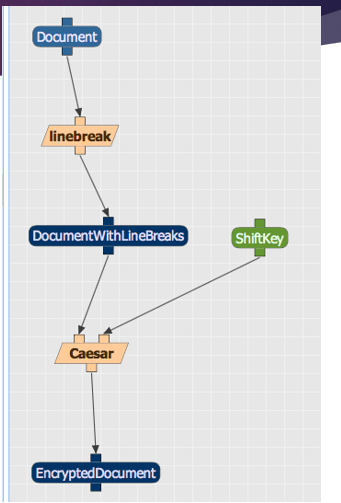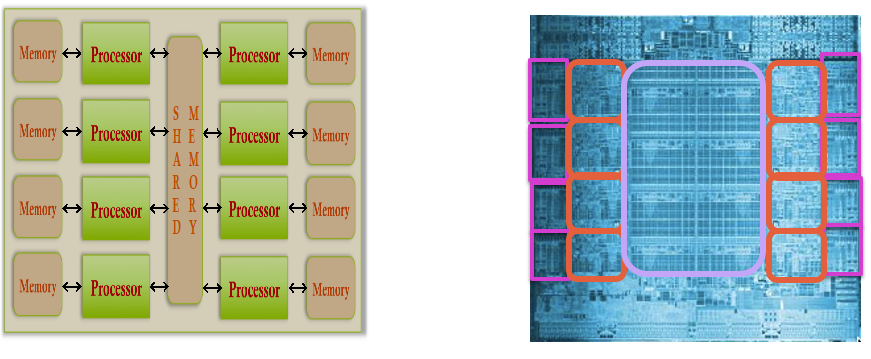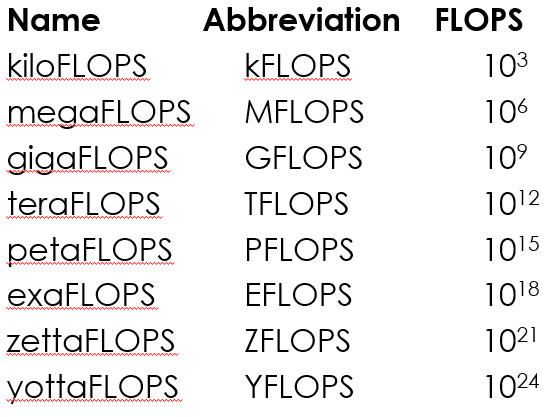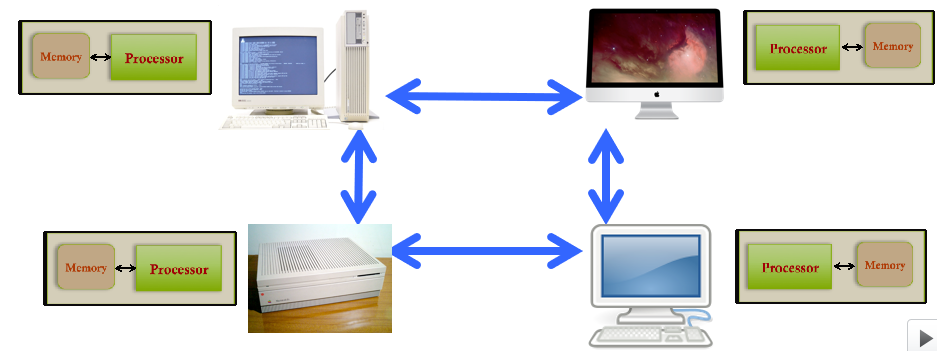Lecture 5: Data Analysis as Workflows, Lecture 6: Parallel Processing, Lecture 7: Distributed Computing
1/29
There's no tags or description
Looks like no tags are added yet.
Name | Mastery | Learn | Test | Matching | Spaced |
|---|
No study sessions yet.
30 Terms
Workflow
Composition of functions
Computational workflows
Composition of programs
No user interaction during execution
No cycles allowed!

Workflow Component
Represents a function (or computation) in the workflow that is implemented as a program with inputs, parameters and outputs

Electronic Lab Notebooks
A Popular Alternative, Record data, software, results, notes, etc
Records what code was run when generating a result
Can re-run with new data
Algorithmic Complexity
Linear complexity: When its execution time grows linearly with the size of the input data
Polynomial complexity: When its execution time is bound by a polynomial expression in the size of the input data (e.g., n³)
Exponential complexity: When bound by an exponential expression (e.g., 2n)
Algorithmic Complexity: Big “O” Notation
n: size of the input data
Linear complexity: O(n)
Polynomial complexity: O(nk)
Exponential complexity: O(kn)
Divide-and-Conquer Strategy
Divide into pieces → solve each piece separately → combine the individual results
*Requires that each piece is independent of the other
Dependencies and Message Passing
The steps within an algorithm may have significant interdependencies and require exchanging information, and may not be easily parallelizable
Speedup
S = TimeSequential/TimeParallel
Critical Path
Consists of consecutive steps that are interdependent and therefore not parallelizable
Amdahl’s Law
Theoretical speedup in the execution of a task where p is the percent (proportion) of the task that is parallelizable (1/1-p)
Embarrassingly Parallel
Cleanly separable and can be carried out in parallel, typically with significant speedups
Multi-core computing
Several processors (cores) in the same computer

Shared memory

Distributed memory

Mixed-memory architecture

Multi Core Chips

Graphical Processing Units (GPUs)
Designed to do simple computations to display graphics and are very cheap
Floating points operations per second (FLOPS)
How the speed of supercomputers are measured

Distributed computing
A parallel computing paradigm where individual cores do computations that are orchestrated over a network (e.g., the Internet)

Web services
An approach to distributed computing where third parties offer services for remote execution that can be orchestrated to create complex applications

Grid computing
An approach to distributed computing where the computing power of several computers of a different nature are orchestrated through a central “middleware” control center
Cluster computing
An approach to distributed computing where the processing of several computers of very similar nature is orchestrated through a central head node
Virtual Machines
Frozen versions of all the software in a machine that is needed to run an application, including OS, programming language support, libraries, etc.
Parallel programming languages
Languages that contain special instructions to use multiple processing and memory units
MapReduce and Hadoop
Provide a programming language to implement a divide-and-conquer paradigm for distributing computations
Split (map)
Process
Join (reduce)
Manage execution failures automatically
Map Reduce was developed at Google and is proprietary. Hadoop has equivalent functionality but is publicly available (open source)
Set up to run on clusters
Hadoop has created an ecosystem of associated software with useful functionality (Spark, Pig, Hive, etc.)
Repeatability
The same lab can re-run a (data analysis) method with the same data and get the same results
Reproducibility
Another lab can re-run (a data analysis) method with the same data and get the same results
Should always be possible
Replicability
Another lab can run the same analysis with the same or different methods or data and get consistent results
Lack of this is just as important as success in this
Generalizability
Result of a study apply in other context or applications